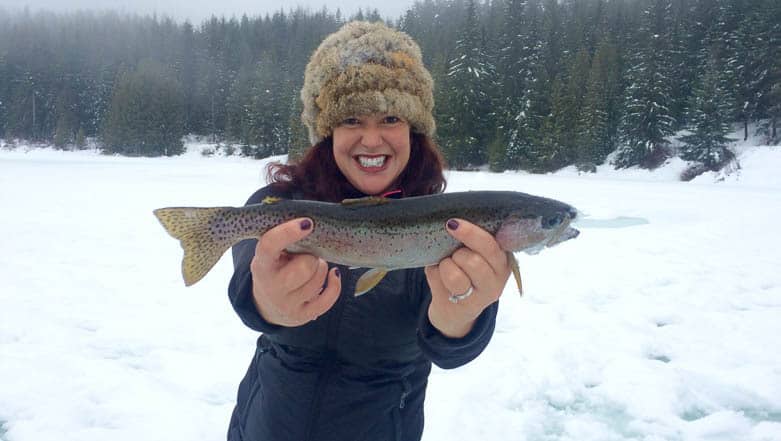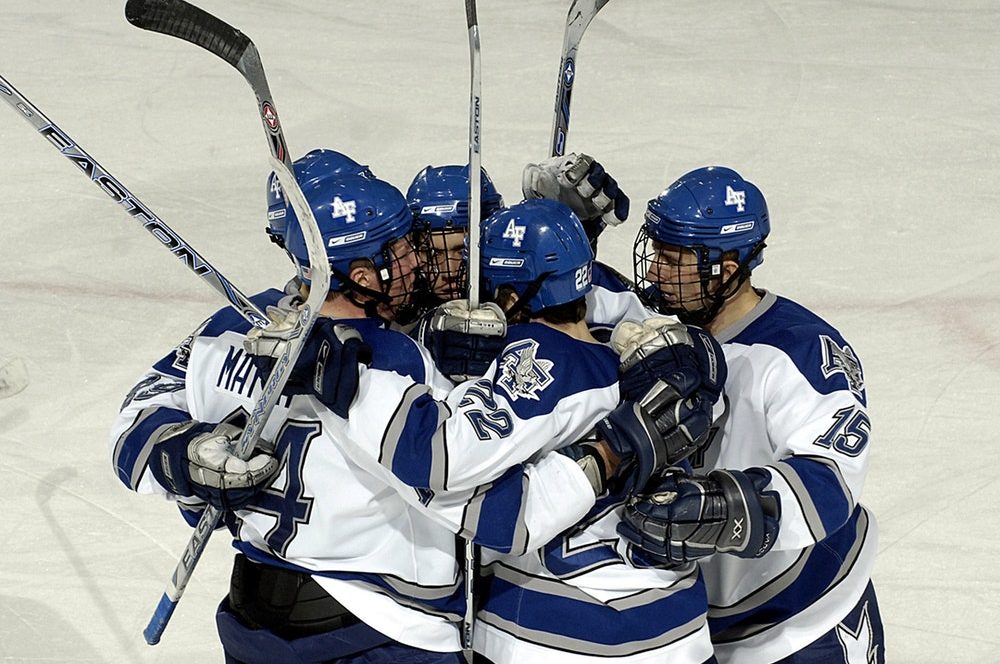It can be just as hard to be active outdoors in gross weather as it is to stick to your diet goals during the holidays. The great news is that Gore-Tex has now been invented, and warm inner layers are far more stylish than the long-johns of old. Living in the Pacific Northwest, my family is very lucky to have hiking and ski hills at our doorstep, but getting outside still takes motivation when the weather isn’t co-operating.
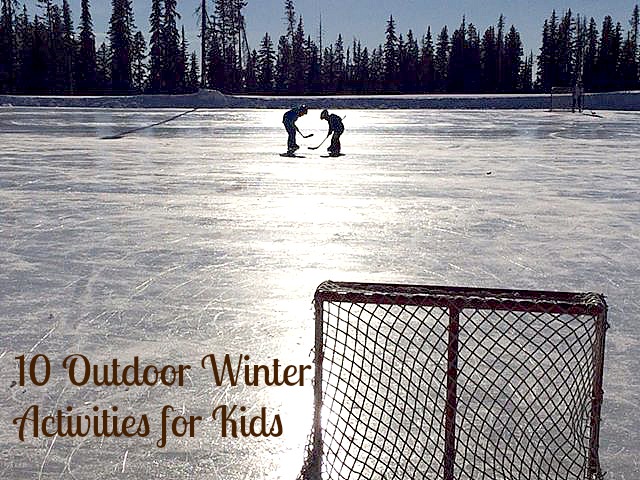 What a winter we have had! But the cold should not keep Canadian families indoors. Bundle up, get outside and get physically active every day with one of our 10 outdoor winter activities for kids. Why? Because active play is essential to every child’s physical, cognitive, emotional and social development—even in winter. Unfortunately, one study shows Canadian kids spend only three hours per week playing actively in the winter, compared to four and a half hours in summer. (via www.participACTION.com). A part of this lack of play during the winter months is due to the four main barriers to play; safety concerns, too much screen time, unruly weather and not enough hours in the day.
What a winter we have had! But the cold should not keep Canadian families indoors. Bundle up, get outside and get physically active every day with one of our 10 outdoor winter activities for kids. Why? Because active play is essential to every child’s physical, cognitive, emotional and social development—even in winter. Unfortunately, one study shows Canadian kids spend only three hours per week playing actively in the winter, compared to four and a half hours in summer. (via www.participACTION.com). A part of this lack of play during the winter months is due to the four main barriers to play; safety concerns, too much screen time, unruly weather and not enough hours in the day.
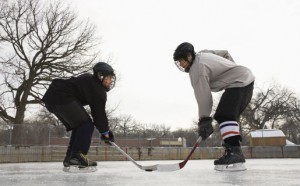
It might be Canada’s unofficial national sport (after lacrosse…) but hockey can cause parents a ton of stress. And we’re not talking about Stanley Cup Playoff season. Early mornings, expensive equipment and growing children can mean a winter season filled with budgetary demands for families. Fortunately there are a few options for parents. Applications are now open for Hyundai Hockey Helpers, a program entering its second year. The program provides grants to help under-resourced Canadian families get their kids in the game and they’ve partnered with Montreal Canadiens defenceman P.K. Subban and his father Karl to help spread the word.
UrbanMommies was given the special opportunity to interview Karl Subban, a former school principal and hockey dad, with a few pressing questions from parents whose kids love the good ol’ hockey game.
1. Our family spent a chunk of the summer making playtime and family time a priority. It was tough! When a child is focused and enmeshed in one activity and wants to be at the top of their sport, how do you pull them away from it?
It’s wonderful to see a child focused on something that they love. It also teaches them focus and self-control, two necessary ingredients for success and high achievement.
However, parents must take an active role in creating balance. Schedule family time and time to play. The younger the child, the more involved parents should be in those activities. Parents should also lead by example. Demonstrate the balance you want to see in your children. If your children see you devoting all of your time to work or one pursuit, this will influence them to do the same.
2. I love your advice about rewarding effort and milestones instead of the wins. Could you name a few hockey milestones that parents might encourage and watch for in their children?
Celebrate the day your child truly develops a passion for the game – the day they want to go to practice, the day they can’t wait to get those skates on. For some kids, it comes automatically. For others, it takes time.
The drive to get involved with the game is a big milestone. My sons PK and Jordan wanted to get right in the game from the start, while Malcolm did not want to chase the puck. We celebrated the day his eyes lit up and he truly got into the game with his team.
Some milestones are harder on parents, like the day kids want more independence. But I look at it this way – I’ve set them on the right the path. The rest is up to them.
3. What advice do you have for the parent whose child thinks they want to play and then gets discouraged or wants to quit halfway through the year?
Kids love attention and praise, so we need to make sure that those two ingredients are there in plenty. It raises their self esteem and confidence. A lack of those two things can be the reason why they are discouraged.
If they are discouraged, ask them why they don’t want to play anymore. Are they having fun? Are they being praised and feeling confident? Is someone on the team bullying them? Do they wish they could have time to devote to other activities? Find the root cause so you can help them achieve a balance, and see if there are any larger issues. It could be a complex problem, or as simply as switching their position on the team.
Kids get turned off if they aren’t having fun, and the biggest barrier I’ve seen is when the playing and practicing balance is off. At a younger age, they should be playing more than practicing. This balance can shift as a child grows.
You should also take the time to explain that a new skill is difficult, but rewarding. If they get used to quitting when the going gets tough, it will be hard for them to stick to any activity and develop their skills.
4. You are an accomplished educator and also the father of a hockey pro. I loved that one of your recommendations for kids is to teach them to give back. How did you encourage P.K., Malcolm and Jordan to give back when they were young?
Parents have to model the behavior and encourage the whole family to get involved. At our school, our family always participated in our local food bank program.
I also encouraged to them to show gratitude to important people in their life through small gestures. At the end of the year, our sons would select a small gift for their hockey coach. It was usually just a new whistle, but the small token and a thank you card means a lot. My son PK continues to be heavily involved in the community at a grass-roots level, from the Hyundai Hockey Helpers program to visiting local schools.
5. The Hyundai Hockey Helpers program is such a boon to the industry and Canadian families in need. You put three boys through hockey and made many sacrifices. Do you have tips for parents in addition to the grants that are offered as to how they can ease the financial burden of getting their kids involved in hockey?
The cost of hockey grows along with your child. There are steps that parents can take to minimize costs in the early stages of the game, from purchasing wooden sticks instead of composite, to carpooling with other families.
Outdoor rinks were a financial savior for me and my boys. Outdoor rinks and public skates cost little and are a great way to get ice time cheaply or for free. We also purchased used equipment to help further reduce our costs.
If you have two or more kids, ask your local hockey association if they can offer you a discount, they often will. It’s also common for them to assist with goalie equipment in the minor leagues.
Finally, get your kids working when they are old enough! It will teach them the value of a dollar and ease the financial burden on the family. PK worked at hockey schools, teaching drills and setting pylons.
Additional Tips:
- Kids need balance. While long drives to tournaments and early morning practices can be overwhelming, it’s important to include family and play time. A child overwhelmed with a demanding schedule may soon lose his or her passion for the game.
- Kids need direction. Let your kids know why they are participating in an activity. Not only are they gaining skills to be a better player, but they are gaining the skills to be a better person, including confidence, teamwork, and communication. And most of all, they are playing to have fun.
- Motivate by rewarding effort, not wins. It’s easy to take your child out for an ice cream if they win a game, but it means more to celebrate milestones achieved through hard work and perseverance.
- Remind children that they get better over time, not over night. Kids can get frustrated when they don’t feel they are making progress. Maintaining current skills is an accomplishment, and those tiny, incremental improvements are leaps and bounds for children.
- Keep them fueled. Aim for balanced meals, but don’t obsess over nutrition. Kids can be picky. Try feeding them like a professional athlete and you will fight a losing battle. Remember, even pancakes (our family favourite) have protein-rich milk and eggs.
- Be an active listener. You want to influence young people, but more importantly you want to inspire them. Listen to your child’s subtle cues.
- Teach kids the importance of giving back from a young age. Regardless of socio-economic status, all kids can give back. Whether it’s giving up a seat on public transit to someone in need or holding a door, small acts of kindness can go a long way to instill the values that ultimately make a great hockey player.
- It truly does take a village to raise a child, so don’t be afraid to ask for help. Organize a car pooling schedule for your team. If finances are an issue, there are organizations that can help for almost every sport. Hockey parents in need can visit HyundaiHockey.ca to confidentially apply for grants for equipment and registration fees.
After hours of games – in one spot 40 kids had been selected to participate and over 300 showed up – I was able to really see the theories behind Right To Play. It is genius and the youth of Claratown, Monrovia, Liberia showed me the learning and laughter produced by Right To Play. I keep thinking of the parallels it has to the theatre sports of my youth and university years, teaching attention to detail, conversational abilities, control of the body and leadership. After every game (not a soccer match, but a shorter activity such as ‘What time is it Mr. Wolf’ or ‘Find the person in the circle who is leading the activity’ or ‘find whose hand the stone is hidden in’ – there is a very deep discussion about the lessons learned. Some games invite you to state your name proudly as you go around the circle. I did that one in theatre school continually. Others ask you to say the name of a country or boy’s name in a metronome-like tempo – the trick being you can’t repeat one said already. Bails of laughter resounded when I hesitated and shouted ‘Britney’ for a girl’s name. They all thought I was perfect, as I was white. But no. You should have seen their faces when they had to mimic an action and I chose the Gangam Style jumps!
There are also other games that I played like Mosquito Tag that teach about issues pertaining to the local culture: sleep under a mosquito net, reduce garbage and don’t leave water standing. In others, we talked about the meaning of discrimination, segregation and equality. With the smaller kids we worked on left and right, body parts, physicality and focus as well as healthy eating (the fruit salad game!).
It was so special to have the opportunity to speak with locals. They think we have no problems in North America. I explained the homeless in Vancouver, the sexual assault, poverty and murders throughout our country. They were shocked. I talked about food banks and violence and they realized that perhaps we are not as shiny as we may seem. I watched them cook and set up individual businesses buying bleach or grain in bulk and selling it in small packets for a profit. This was not only a poverty-stricken society, but almost operated as if it were 1800 – the cell phone charging stations aside.
After two vigourous play sessions, I attended a two and a half- hour forum on drugs and youth. It was lengthy and – wow – the West African accents are hard to understand! But I was floored. These youth leaders – from teens to mid-thirties – arranged this event with guests. Our Canadian group of 7 were special attendees. But the mayor and governor of the region also attended. And two representatives from the Drug Enforcement Agency. I hadn’t been in such a formal atmosphere since student government days at Queen’s. The Queen’s students had nothing on these statesmen. Points were discussed, debated, restated and analyzed.
I came to a realization. This conversation and articulation was the next logical phase of the Right to Play programs in which I was participating. After being kids, people become youth leaders and then full-on volunteers who run groups all over Monrovia. In Westpoint there were 9 circles of at least 40 kids. The leaders were better than most counselors I have had in my life (don’t make me tell you how many). And they were jobless. They volunteer their time because they realize that if they don’t, their community will implode once these kids reach a certain age.
At the meeting, six-time Olympian Clara Hughes spoke for our group about her drug use as a teen. A pin could have dropped. These topics are not discussed in West Africa. There are trucks that sell shoe polish to ensure appearances are tidy and yet there is no affordable way to go to the bathroom. She then talked about determination and the blessings she received by having leaders, coaches and trainers. And how, despite her difficult past, went to to win Olympic medals for Canada during both the summer and winter games.
History was made at this meeting. I kept thinking of the French Revolution. Seeing fourty people who have been through a recent war, and whose brothers and parents now suffer the effects of cocaine and marijuana, I could feel change bubbling within the room. And these people all experienced Right To Play programs after being through a horrific war. I would argue that my children cannot articulate in public the way the children involved in Right To Play programs had as we ‘played’. And at the meeting? I wish I could hire the whole lot of them to negotiate for me and run my company.
After the discussions we were blessed with African drumming and dance of some local children outside the building. There was a 3 year old who couldn’t control herself and followed along. The hope extended from inside to out.
In case you missed the first travel article focused on West Point it is archived here.
What is a luxury? Louis Vuitton, of course. And silk pajamas. A suite at the Four Seasons. Truffles are at the top of my list. This is fun. I like this game. But what about less obvious facets of life like health and education? Are sport and play a luxury? Life skills? Are the notions of co-operation, teamwork and fairness luxuries too?
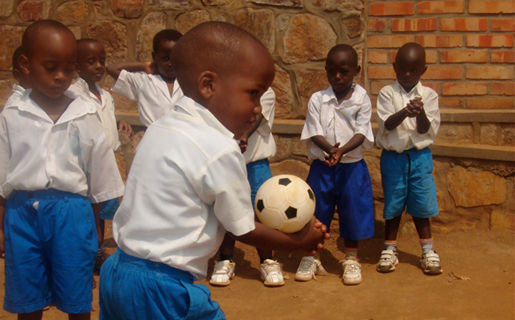 It’s been a rough week. My son is having a hard time with self-esteem and handling stress. He is lashing out and struggling and as his mother, I feel my heart breaking piece by piece.
It’s been a rough week. My son is having a hard time with self-esteem and handling stress. He is lashing out and struggling and as his mother, I feel my heart breaking piece by piece.
But today is soccer day. He was up, dressed and ready to get inspired by his coach and teammates. He runs. He plays. He tells the kid who missed the pass that it’s ok. Living in such a privileged community does not fix the growing pains that kids go through, but having abundant resources to help makes everything easier. I have seen first-hand how sport and guidance help children thrive.
 I am honoured to be part of a new program with Right To Play called Level The Field. The organization operates to create a healthier and safer world through the power of sport and play to help create a level field and equal opportunities for children everywhere. Teamwork, cooperation and respect are explored in fun ways and community leaders act as coaches to change behaviours. Right To Play’s innovative methodology is grounded in a deep understanding of social learning theory and child development needs. Through sport and activities adapted from local traditional games, mental, physical and psycho-social well-being of the children improve. (And I have a hunch that the parents feel pretty good as they watch their children play and laugh.)
I am honoured to be part of a new program with Right To Play called Level The Field. The organization operates to create a healthier and safer world through the power of sport and play to help create a level field and equal opportunities for children everywhere. Teamwork, cooperation and respect are explored in fun ways and community leaders act as coaches to change behaviours. Right To Play’s innovative methodology is grounded in a deep understanding of social learning theory and child development needs. Through sport and activities adapted from local traditional games, mental, physical and psycho-social well-being of the children improve. (And I have a hunch that the parents feel pretty good as they watch their children play and laugh.)
Typically my writing is laced with wit and fluff. But as I write today, tears are close. I read about the children in Liberia and I think about my son’s behavior. What do mothers feel when their children get sick because they haven’t learned that washing hands can prevent disease? If my heart is breaking from watching my son suffer, what would it be like for parents living in disadvantaged areas of the world? We all grow up with our own context and it is difficult to compare hardships, but I can’t help wanting to do everything in my power to help those moms smile as they watch their children thrive and grow.
Right To Play has given me the gift and opportunity to be able to help them raise awareness about the work they do every day, all over the world.. I have been partnered with Kaylyn Kyle, Vancouver Whitecaps soccer goddess and Olympic medalist. Together, we promote how we can help level the field for children through play with a focus on how play can positively impact the health of those in Liberia.
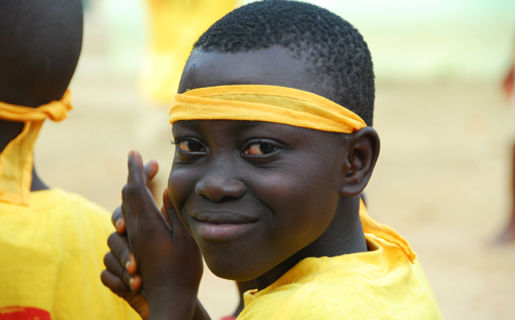 Liberia is one of the poorest countries in the world with one of the highest incidences of malnutrition, infectious disease and other global health concerns. 85% of people live below the world poverty line*. A massive civil war between 1989-2003 not only modeled violent combat for the children, but it created a lack of trust in people from other communities. After Right To Play started working with local communities in Liberia in 2008, there are more organized sports and activities and people from various communities play together. Children are less likely to reach for weapons and fists to settle conflicts. And 183 local leaders and supervisors have been trained as positive role models. People with disabilities are now included in play, and girls and boys are now playing together more often, in a country with a high incidence of sexual violence and a history of gender inequality.
Liberia is one of the poorest countries in the world with one of the highest incidences of malnutrition, infectious disease and other global health concerns. 85% of people live below the world poverty line*. A massive civil war between 1989-2003 not only modeled violent combat for the children, but it created a lack of trust in people from other communities. After Right To Play started working with local communities in Liberia in 2008, there are more organized sports and activities and people from various communities play together. Children are less likely to reach for weapons and fists to settle conflicts. And 183 local leaders and supervisors have been trained as positive role models. People with disabilities are now included in play, and girls and boys are now playing together more often, in a country with a high incidence of sexual violence and a history of gender inequality.
Level The Field video
I’m embarrassed. Not only did I not know about the work done by Right To Play, but I didn’t have a handle on how bad things are in disadvantaged countries around the world. Did you know that 26,000 children under the age of 5 die every day? Infectious diseases such as HIV, measles and diarrheal disease are largely preventable. I can’t stop shaking at the thought of the mothers watching their toddlers die. We need to help. By voting for our program, or the program you feel most passionately about on Facebook, you can help us raise awareness about Right To Play’s work and also enter for a chance to accompany the team with the most votes on a visit to see a Right To Play program in-action. We need to lessen the number of broken hearts in this world.
 *Source: Charitywater.org
*Source: Charitywater.org
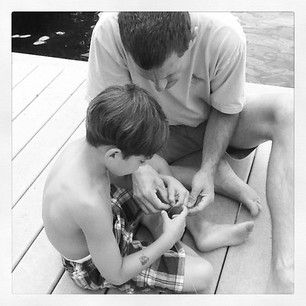 Have you ever thought about teaching your kids the art of fishing? Of course there’s the romance of little Huckleberry Finns sitting on a dock with a string and a stick. And then there’s the possibility of catching dinner. And teaching kids that all food doesn’t necessarily come from a supermarket. But the photos you’ll get? Priceless.
Have you ever thought about teaching your kids the art of fishing? Of course there’s the romance of little Huckleberry Finns sitting on a dock with a string and a stick. And then there’s the possibility of catching dinner. And teaching kids that all food doesn’t necessarily come from a supermarket. But the photos you’ll get? Priceless.
We spent a week this summer in the New York Finger Lakes swimming, casting and paddling. But the best memories were on the dock. When ‘Uncle Brad’ gave a fishing rod and tackle to my eldest son, the eyes lit up and hours were spent learning about sinkers, hooks and worms. Taking them all out and organizing. Sleeping with them. Uncle Brad is quite the accomplished fisherman, and I convinced him to share his tips for teaching kids the art of fishing.
1. Rule #1: Size does not matter. Any fish is a good fish. And catching one and handing them the rod can get them ‘hooked’ for life.
2. Start the teaching of casting using foam fish and a foam hook. When attached to a line, the foam hook can be used to retrieve the floating fish form in the water.
3. A kid’s rod is shorter with an internal reel and button. (Bait casting reel as opposed to a spinning reel). Shakespeare makes great ones for boys and girls and they are readily available at Target and Walmart. (You can even get Disney, Star Wars, Spiderman and princess themes).
4. A dock on a calm lake from 6-8am is usually the best time to nab the critters.
5. Use pliers to flatten the barbs on your hooks. It’s nicer for the fish.
6. Always remove hooks from the lines when you are done so as not to invite any injuries.
7. Make the kids look around prior to casting. My son caught a 5-foot-eleven man named ‘Uncle Brad’.
8. Encouraging the kids to drop the fish back into the water will excite them. (And then you don’t have to touch them).
9. Live worms are an easy and plentiful bait.
10. Try to teach about the species of fish as you catch.
11. Patience can be a challenge for kids. But having quiet conversations as you set your lines can form the best memories and bonds between parent and child.
12. Make sure at least one adult isn’t squeamish about baiting the hooks or taking fish off the line.
13. Rod and reel are not necessary. A string tied to a bamboo pole with a hook works just fine.
14. Fish under a certain number of pounds must be tossed back. Check in the jurisdiction you are in. And keeping anything as a pet is just a bad idea.
15. Hats, sunscreen, fishing license, water, band-aids and snacks should never be far away.
Next step? Tying their own flies and mastering the art of planking a salmon. Oh – and never make the mistake of asking first if they caught anything. As a good friend once said, “I’m going fishing. Not fish-catching.”
I have a bit of a thing about castles. Princess complex? Perhaps… but there is nothing quite like skiing down Blackcomb mountain as the Fairmont Chateau Whistler comes into sight. All week before we departed for Whistler Blackcomb the kids announced to every person they saw that we were staying at a castle. And it was. And I felt like a princess in a resplendent building while the whole family – kids especially – were treated with boundless respect.
Picture it. A gentle snowfall and sparkly white lights on the trees. We pull up the majestic circular driveway and the valets are waiting. They were so friendly that we couldn’t get the kids out of the car – there were very serious discussions happening around Star Wars Lego. The kids are ecstatic. They have a thing about riding on the luggage carts and giggling as I remind them that they are not suitcases. Maybe when they grow up.
Checking in we were given reusable bags that say ‘I’m a Fairmont Kid!’ . The treats inside not only occupied the boys, but the colouring book was all about bears and provided a fabulous learning opportunity as well. (Thankfully I didn’t run into a bear as I hiked Spanky’s Ladder.)
There is something old-world and artistic about Fairmont properties. I have stayed at at least 8, and in my view, they are cutting-edge in terms of being kid-friendly. Normally the term means tacky plastic stuff and flashing lights. Looking around, there is art everywhere – stone valise sculptures, intricate and modern floral arrangements, architectural flourishes and iron crows on the banisters. The kids were chirping at them. Yes, every time we walked by.
If this were a book, I’d do a whole chapter on the concierges. If their smiles and jaunty ski sweaters weren’t enough I have decided that they are the demi-Gods of helpfulness. Ian especially. My hero. He charges my Blackberry (often) and when my colleague lost his corporate visa card (it wasn’t me honest), Ian called every place this man had been the night before. He then phoned Visa to cancel it. Demi Gods. I told you.
One of my favourite things about the rooms were the preppy cableknit blankets on the beds. The fridge in the room is kept empty – a great help to parents who bring along snacks. Kid-friendly extends to rooms as well. I had no idea that if parents want a connecting room for the kids, the second room is half price. The tiny bathrobes were certainly a highlight for the boys. They breezed through the lobby en route to the hottub and were excited to find a little warming hut to hang them in order to ensure they remain dry. Oh – and while you’re in the spa, ask for Wilma. She offers private swimming lessons for adults and little ones. So they’ll soon be able to ski AND swim circles around you. Great. (If you opt for free-floating the Fairmont supplies lifejackets too).
Whistler has cache. But there is only one bar in the entire place that exudes the alpine mystique. The Mallard Lounge. A semi-circle bar, sledding for kids on the hill in back (they provide sleds), live music, domed ceilings, classic cocktails… And kids are allowed (even at the bar) until 9pm. Bartender extraordinaire Adam loves to serve kids Egyptian Lemonade – muddled with mint and raspberries. A sparkling apple drink is served in a martini glass. See? Kids are sophisticated too. And the Chateau knows it.
They’re pretty cool with pets as well. Dogs are part of the family, after all. Jennifer Tice, the Public Relations Manager, showed me a picture of 2 puppies that she snapped with her iPhone. She explained that these ‘hotel guests’ make so many people smile as they trot throughout the lobby, and the dogs assist in bringing people together and creating a social atmosphere throughout the hotel. They have that down. Sitting areas, tables, and sofas. The lobby was always buzzing with activity and a great vibe.
I had the honour to visit the Wildflower Restaurant on 2 occasions. Chef Vincent Stufano not only creates incredible dishes featuring locally sourced ingredients, but also features a ‘lifestyle cuisine plus’ menu with options in the following categories: heart healthy, diabetes, vegan, raw, macrobiotic, and gluten free. Double wow. The restaurant also has a ‘sea to sky menu to go’. For the road. Just don’t get pulled over like we did on the way up. (Hopefully your lox and bagel doesn’t give energy to your accelerator foot..)
Dinner was amazing. It was just adults (thank you Nannies on Call). Before we dined I ordered room service for the kids their meals come with drink and dessert. Not only is there a kids’ menu, but when I asked for milk, They questioned: “plain, chocolate or strawberry?” Seriously? Then I learned that in December Fairmont created a new healthy eating menu just for the kids!
“Fairmont Chefs ensure these pint-sized offerings reflect the same basic principals as Lifestyle Cuisine and address the nutritional guidelines established for children by the Institute of Medicine of the National Academies. Proactive steps include swapping out refined flour for whole wheat, incorporating fruits and vegetables into recipes to help meet the recommended daily fiber allowance, and employing alternative cooking methods to help ensure healthier choices are made available to young diners. “
On our final morning I took the boys to the Wildflower for breakfast. Kids eat free. Wow. And when they entered? They were each given an etch-a-sketch. Our waiter told them it was an old-fashioned iPad. I laughed hard. (The boys looked at me with puzzlement as they touched the screen). As we left each child was given a cookie as big as my head. ‘for the road’.
In all? I have a new go-to place when I ski. After my weekend, the family is closer, the kids feel special, we made a ton of memories, and Ian the concierge is my new best friend.
Family Fun in Whistler
Disclosure: UrbanMommies was provided accomodation at the Chateau in order to write this piece, and as always all opinions are our own.

